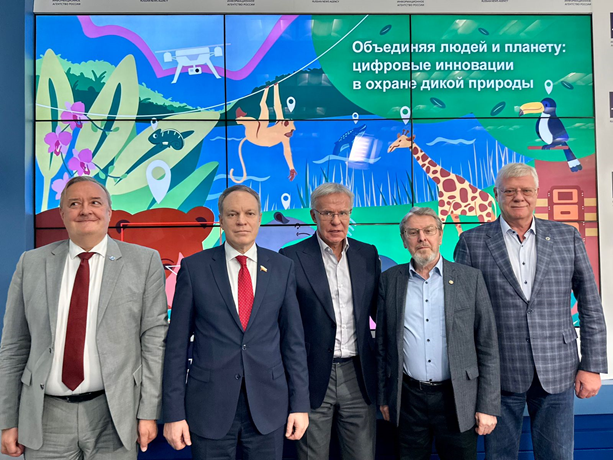
On March 4, TASS hosted a press conference dedicated to “World Wildlife Day 2024: Digital Innovation” and dedicated to the official opening of the International Year of Camelids in Russia. The press conference was attended by the chief researcher of the Institute of Economics and Economics of the Russian Academy of Sciences, Chairman of the Scientific Council of the Russian Academy of Sciences on problems of ecology of biological systems, Academician of the Russian Academy of Sciences Vyacheslav Rozhnov.
V.V. Rozhnov began by talking about the role of digital innovation in environmental projects, in particular the use of artificial intelligence in the analysis of space images, which makes it possible to identify and count saigas on them, which opens a new page in animal monitoring. Digital conservation technologies like these help conserve wildlife. Regarding camelids, he noted that camels provide more than just meat, wool or transportation. This includes wildlife, culture, religion, medicine, and history.
V.V. Rozhnov spoke about the wild camel - khavtagai, whose name translated from Mongolian (flat) reflects the peculiarities of the body shape of this species. Several hundred individuals of Khavtagai still live in the Great Gobi Nature Reserve in Mongolia, where the Joint Russian-Mongolian Biological Expedition of the Russian Academy of Sciences and the National Academy of Sciences of the Mongolian People's Republic operates. V. Rozhnov recalled the canvases with camels by the wonderful Russian battle painter Vasily Vereshchagin, and that Christians greatly reverence Orthodox holy healers, many of whom are well known to people - for example, St. Luke of Crimea, Great Martyr Panteleimon, and told the story of the cured brothers-healers Cosmas and Damian the wild camel. These brothers lived in Asia Minor in the 4th century and vowed not to charge for treatment. But towards the end of his life, Damian had to break his vow - he took three eggs from a healed woman in the name of the Holy Trinity, and Cosmas, not knowing the reason for this, was so upset that he made a will in which he forbade burying himself and his brother together. And only thanks to the camel cured by the silverless brothers that came to the people they learned the secret that almost led to a rupture in relations between them.
V.V. Rozhnov focused a lot of attention on the place of camels in medicine, pharmacology and biotechnology, to which they owe antibodies, or immunoglobulins, which today are a key tool for the study of specific proteins and the processes in which they participate, as well as the basis for the production of medicine and immunobiotechnological drugs. It turned out that only camelids and some cartilaginous fish have not just antibodies, but single-domain nanoantibodies (nanobodies). Camels that are kept at the Chernogolovka scientific and experimental base of the Institute of Ecology and Evolution of the Russian Academy of Sciences are used by employees of the Institute of Gene Biology of the Russian Academy of Sciences to obtain nanobodies, immunizing them in a special way to obtain special camel nanoantibodies to given antigens. They use such nanoantibodies to treat allergic diseases, a number of infectious diseases (mycoplasma, anthrax, leptospirosis, rabies, etc.), and to diagnose diseases, including cancer.
Speaking about history, Vyacheslav Rozhnov spoke about camels, which replaced horses during the Great Patriotic War. In 1942, during the Battle of Stalingrad, the 28th reserve army was formed in Astrakhan, in which the draft force consisted of captured wild camels and ones brought from Central Asia. And one of the first shots at the Reichstag was fired by a crew in which the camels Mashka and Mishka “served,” to whom a monument was later erected in Akhtubinsk.
